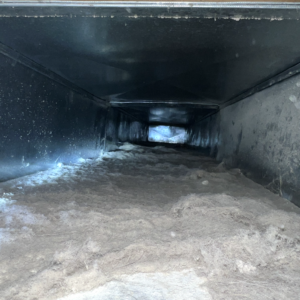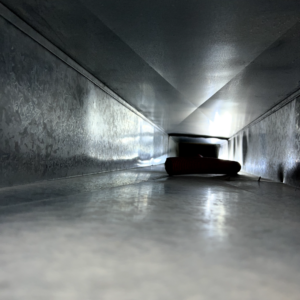
Air Duct Cleaning Guide
Air ducts are often the unsung heroes of indoor air quality and HVAC system efficiency. While they quietly distribute heated or cooled air throughout our homes and workplaces, they can also become breeding grounds for dust, allergens, mold, and other contaminants over time. This accumulation not only compromises indoor air quality but also impedes the performance of heating and cooling systems, leading to increased energy consumption and potential health issues. In this comprehensive guide, we’ll explore the importance of air duct cleaning, its numerous benefits, signs indicating the need for cleaning, the cleaning process itself, and the decision-making process between DIY methods and professional services. Additionally, we’ll provide valuable insights on choosing a reputable cleaning service, maintaining clean ducts, answer frequently asked questions, and encourage you to prioritize the health and efficiency of your indoor environment by considering air duct cleaning today.
Why Clean Air Ducts
Air ducts play a critical role in maintaining indoor air quality and the efficiency of HVAC systems. As air circulates through the ductwork, it can carry various contaminants such as dust, pollen, pet dander, mold spores, and bacteria. Over time, these pollutants accumulate within the ducts, creating a breeding ground for allergens and potentially harmful microorganisms. Without regular cleaning, these contaminants can recirculate throughout your home or office, contributing to respiratory issues, allergies, and unpleasant odors. By prioritizing air duct cleaning, you can remove these pollutants and ensure healthier indoor air for you and your family.
Benefits of Air Duct Cleaning
1. Improved Indoor Air Quality:
Clean air ducts help remove airborne contaminants, allergens, and pollutants, leading to fresher, healthier air indoors. This can alleviate allergy symptoms, reduce respiratory irritations, and create a more comfortable living or working environment for occupants.
2. Reduced Allergens and Respiratory Irritants:
By removing dust, pollen, pet dander, and other allergens from air ducts, you can significantly reduce the triggers for allergies and respiratory issues. This is particularly beneficial for individuals with asthma, allergies, or other respiratory conditions, as it can alleviate symptoms and improve overall well-being.
3. Enhanced Airflow and Temperature Regulation:
Clean air ducts facilitate better airflow throughout your home or office, allowing heating and cooling systems to operate more efficiently. This results in improved temperature regulation, consistent comfort levels, and reduced strain on HVAC equipment, leading to energy savings and increased system longevity.
4. Increased Energy Efficiency:
A clean HVAC system consumes less energy to maintain desired indoor temperatures, resulting in lower energy bills and reduced environmental impact. By removing obstructions and optimizing airflow within air ducts, you can improve the efficiency of your heating and cooling systems, ultimately saving money and conserving energy resources.
5. Prolonged Lifespan of HVAC Systems:
Regular air duct cleaning helps prevent dust and debris buildup within HVAC equipment, reducing wear and tear on components and prolonging the lifespan of the system. This minimizes the need for costly repairs and replacements, saving you money and ensuring the continued reliability of your heating and cooling systems.
6. Removal of Unpleasant Odors:
Mold, mildew, bacteria, and other contaminants that accumulate in dirty air ducts can emit foul or musty odors into your living or working space. Professional air duct cleaning removes these odor-causing agents, leaving your indoor environment smelling fresh and clean. Whether you’re dealing with lingering cooking smells, pet odors, or musty odors from mold growth, air duct cleaning can help eliminate unpleasant odors at their source.
7. Prevention of Mold Growth:
Moisture can accumulate within air ducts, providing an ideal environment for mold and mildew growth. Regular air duct cleaning removes moisture and eliminates existing mold, preventing its recurrence and safeguarding your indoor air quality.
By prioritizing air duct cleaning, you can enjoy these myriad benefits, creating a healthier, more comfortable, and energy-efficient indoor environment for yourself and your loved ones. Regular maintenance of your HVAC system, including air duct cleaning, is an investment in the long-term health and well-being of your home or office space.
Understanding Air Ducts
Air ducts are conduits used in heating, ventilation, and air conditioning (HVAC) systems to deliver and remove air from indoor spaces. They are typically made of metal, fiberglass, or flexible materials and are installed within walls, floors, or ceilings. Air ducts work by distributing conditioned air from HVAC units throughout the building and returning air to be heated or cooled again.
Signs Your Air Ducts Need Cleaning
– Increased Dust and Allergens: If you notice a buildup of dust on surfaces or experience worsening allergy symptoms, it could indicate dirty air ducts.
– Unusual Odors: Foul or musty odors emanating from your vents suggest the presence of mold, bacteria, or other contaminants within the ductwork.
– Inconsistent Airflow and Temperature: Uneven heating or cooling in different areas of your home may be a sign of blocked or clogged air ducts.
– Visible Mold Growth: Mold growth inside ducts is a serious issue that requires immediate attention to prevent health hazards and further contamination.
The Air Duct Cleaning Process
At Sanitair Air Duct Cleaning, we follow a meticulous process to ensure thorough cleaning and optimal performance of your HVAC system:
1. Initial Inspection:
Our certified technicians conduct a comprehensive inspection of your air duct system using camera systems to assess the level of contamination and identify any potential issues.
2. Preparation:
Before cleaning, we protect your home or office by using corner guards to prevent scratches and dings to walls and wearing booties to ensure that your home is as clean or cleaner than before we came in.
3. Cleaning Methods:
We utilize a combination of brushing, vacuuming, and air washing techniques to dislodge and remove accumulated dust, debris, and contaminants from your air ducts.
4. Advanced Equipment:
Our state-of-the-art equipment, including high-powered vacuums and rotary brushes, ensures thorough cleaning of ductwork, vents, and registers, leaving your HVAC system clean.
5. Sanitization:
We use eco-friendly sanitizing agents to eliminate bacteria, mold, and other harmful microorganisms, promoting cleaner and healthier indoor air quality.
6. Post-Cleaning Inspection:
After cleaning, we conduct a final inspection to ensure that your air ducts are clean and free of contaminants, providing you with peace of mind and improved indoor air quality.
DIY vs. Professional Air Duct Cleaning
Maintaining clean air ducts is essential for ensuring indoor air quality and the efficient operation of HVAC systems. While some maintenance tasks can be performed by homeowners, there are instances where hiring professionals for air duct cleaning is advisable.
When to DIY
1. Changing Filters:
One of the simplest maintenance tasks that homeowners can tackle is changing air filters regularly. Air filters trap dust, pollen, and other airborne particles, preventing them from entering the ductwork and circulating throughout the home. Regularly replacing filters, typically every 1-3 months depending on usage and filter type, helps maintain airflow and indoor air quality.
2. Routine Maintenance:
Basic upkeep tasks such as dusting vents, cleaning registers, and ensuring that air intake areas are unobstructed can be handled by homeowners as part of routine maintenance. These simple actions can help minimize the accumulation of dust and debris in the ductwork, prolonging the intervals between professional cleanings.
When to Call the Professionals:
1. Suspected Mold Growth:
If you suspect mold growth within your air ducts or HVAC system, it’s crucial to seek professional assistance. Mold thrives in damp, dark environments, making air ducts susceptible to contamination if moisture is present. Professional cleaners have the expertise and equipment to safely identify and remediate mold growth, ensuring that your indoor air quality is restored and health risks are mitigated.
2. Excessive Debris Buildup:
Over time, dust, pet dander, and other debris can accumulate within air ducts, potentially obstructing airflow and compromising system efficiency. If you notice excessive debris buildup or visible signs of contamination within your ductwork, such as dust blowing out of vents or debris collecting around registers, it’s advisable to enlist the services of professionals. They can conduct a thorough inspection and cleaning to remove accumulated contaminants and restore optimal airflow.
3. Difficult-to-Access Ductwork:
Some air duct systems may have components that are difficult to access or require specialized equipment for cleaning. In such cases, attempting DIY cleaning may be impractical or ineffective. Professional cleaners have the necessary tools and training to access and clean all areas of the ductwork, ensuring comprehensive cleaning and maintenance.
Risks of DIY Air Duct Cleaning:
1. Incomplete Cleaning:
DIY cleaning methods, such as using household vacuums or simple brush attachments, may not effectively remove all contaminants from the ductwork. Without professional-grade equipment and expertise, it’s challenging to achieve thorough cleaning, leaving behind accumulated dust, debris, and potentially harmful contaminants.
2. Damage to Ductwork:
Improper cleaning techniques or aggressive DIY methods can inadvertently damage the ductwork, leading to leaks, tears, or other structural issues. Damaged ducts compromise system efficiency and can result in air leaks, which increase energy consumption and decrease indoor comfort.
3. Exposure to Contaminants:
DIY cleaning without proper protective gear and containment measures can expose homeowners to airborne contaminants, including dust, mold spores, and bacteria. Professional cleaners follow strict safety protocols to minimize exposure risks and ensure a safe working environment.
In summary, while some basic maintenance tasks can be performed by homeowners, professional air duct cleaning is recommended for more thorough cleaning, mold remediation, and difficult-to-access ductwork. DIY cleaning carries the risk of incomplete cleaning, damage to ductwork, and exposure to harmful contaminants, underscoring the importance of hiring professionals for comprehensive air duct maintenance.
Choosing a Reputable Air Duct Cleaning Service
Selecting the right air duct cleaning service is essential for ensuring thorough cleaning, maintaining indoor air quality, and protecting the integrity of your HVAC system. Consider the following factors when evaluating potential service providers:
Certifications and Standards:
1. Industry Certification:
Look for companies that are certified by reputable organizations such as the National Air Duct Cleaners Association (NADCA). Certification indicates that the company has undergone rigorous training and adheres to industry best practices for air duct cleaning. NADCA-certified technicians are equipped with the knowledge and expertise to deliver high-quality cleaning services while upholding industry standards.
2. Compliance with Standards:
In addition to certification, ensure that the cleaning service complies with industry standards and guidelines for air duct cleaning. Familiarize yourself with established standards, such as those outlined by NADCA or the Environmental Protection Agency (EPA), and verify that the company follows these guidelines in their cleaning processes.
Questions to Ask Before Hiring:
1. Cleaning Process:
Inquire about the specific methods and techniques used in the cleaning process. A reputable service provider should use industry-standard equipment and practices, such as agitation devices, high-powered vacuums, and specialized brushes, to dislodge and remove contaminants from the ductwork effectively.
2. Experience and Expertise:
Ask about the company’s experience in the air duct cleaning industry and the qualifications of their technicians. An experienced service provider with trained technicians is better equipped to handle various ductwork configurations and effectively address cleaning challenges.
3. Insurance Coverage:
Verify that the cleaning service carries adequate insurance coverage, including liability insurance and worker’s compensation insurance. Insurance coverage protects both the company and homeowners in the event of property damage or accidents during the cleaning process.
4. Guarantees and Satisfaction:
Inquire about any guarantees or warranties offered by the cleaning service. A reputable company should stand behind their work and offer assurances of customer satisfaction. Ask about their policy for addressing any issues or concerns that may arise after the cleaning is completed.
Red Flags to Watch Out For:
1. Unusually Low Prices:
Be wary of companies that offer air duct cleaning services at exceptionally low prices. Quality cleaning requires investment in professional-grade equipment, trained personnel, and adherence to industry standards, which may not be feasible at rock-bottom prices. Low-cost services may indicate substandard cleaning practices or hidden fees.
2. Scare Tactics:
Avoid companies that use scare tactics or high-pressure sales tactics to upsell unnecessary services. Reputable air duct cleaning companies focus on educating customers and providing transparent information about the cleaning process, rather than resorting to fear-based marketing strategies.
3. Pressure to Purchase Add-Ons:
Beware of companies that pressure you into purchasing additional services or upgrades beyond what is necessary for your specific needs. A reputable service provider will tailor their recommendations based on the condition of your ductwork and prioritize services that are essential for maintaining indoor air quality and system performance.
By considering these factors and asking the right questions, you can confidently select a reputable air duct cleaning service that meets your needs and ensures the cleanliness and efficiency of your HVAC system. Remember to prioritize certifications, inquire about the cleaning process and experience, and watch out for red flags that may indicate unscrupulous practices.
Signs Your Air Ducts Need Cleaning
1. Increased Dust and Allergens:
A buildup of dust on surfaces throughout your home can be more than just an annoyance – it could be a sign of dirty air ducts. As air circulates through the ductwork, it carries dust particles and other allergens that can accumulate over time. If you find yourself dusting more frequently than usual or notice a thick layer of dust settling on furniture, countertops, and other surfaces, it may indicate that contaminants are being distributed from the ducts into your living space. Additionally, if you or your family members experience worsening allergy symptoms, such as sneezing, coughing, or itchy eyes, it could be due to the increased presence of airborne allergens originating from dirty air ducts.
2. Unusual Odors:
Your sense of smell can be a powerful indicator of potential issues with your air ducts. If you detect foul or musty odors emanating from your vents whenever your HVAC system is running, it’s likely that there are contaminants lurking within the ductwork. These odors may be caused by the presence of mold, bacteria, or other organic matter that has accumulated over time. Mold growth, in particular, can produce a distinct musty odor that is often described as earthy or stale. Addressing these odors promptly is essential, as they not only affect indoor air quality but may also pose health risks to occupants, especially those with respiratory sensitivities or compromised immune systems.
3. Inconsistent Airflow and Temperature:
Your HVAC system relies on a balanced airflow to maintain consistent temperatures throughout your home. However, if you notice significant variations in heating or cooling levels between different areas of your home, it could be a sign of blocked or clogged air ducts. Restricted airflow due to debris buildup or obstructions within the ductwork can impede the distribution of conditioned air, resulting in uneven temperatures and discomfort for occupants. You may find that certain rooms feel warmer or cooler than others, despite adjustments to the thermostat. Addressing airflow issues through professional air duct cleaning can help restore proper airflow and temperature balance throughout your indoor space.
4. Visible Mold Growth:
Perhaps the most concerning sign of dirty air ducts is the presence of visible mold growth within the ductwork. Mold thrives in dark, damp environments, making air ducts an ideal breeding ground if moisture is present. If you detect mold growth on the interior surfaces of your ductwork or around vents, it indicates a significant contamination problem that requires immediate attention. Mold exposure can lead to a range of health issues, including respiratory problems, allergic reactions, and exacerbation of existing conditions such as asthma. Furthermore, mold spores released into the air can spread throughout your indoor environment, leading to widespread contamination if left unchecked. Prompt remediation and thorough cleaning of affected ductwork are essential to mitigate health risks and prevent further mold proliferation.
In summary, increased dust and allergens, unusual odors, inconsistent airflow and temperature, and visible mold growth are key indicators that your air ducts may require cleaning. Monitoring these signs and addressing any issues promptly can help maintain indoor air quality, ensure proper HVAC system performance, and safeguard the health and comfort of occupants in your home or workplace.
Maintenance Tips for Keeping Your Air Ducts Cleaned
Maintaining clean air ducts is essential for preserving indoor air quality and maximizing the efficiency of your HVAC system. Here are some practical tips to help you keep your air ducts clean:
1. Regular Filter Changes:
One of the simplest yet most effective maintenance tasks is regularly changing your HVAC system’s air filters. Dirty filters can allow dust and debris to enter the ductwork, leading to contamination. Replace disposable filters every 1-3 months, or clean and reinstall washable filters according to manufacturer guidelines.
2. Preventing Dust and Debris Buildup:
Keep vents, registers, and surrounding areas clean to minimize the accumulation of dust and debris. Regularly vacuum and dust these components to prevent contaminants from entering the ductwork. Additionally, reduce clutter in your living or working space to minimize the amount of dust generated.
3. Sealing Duct Leaks:
Inspect your ductwork for any signs of leaks or gaps, as these can allow dust, allergens, and other pollutants to enter the system. Seal any leaks using mastic sealant or metal tape to prevent air leakage and maintain air quality within the ducts.
4. Professional Inspections and Cleaning:
Schedule annual inspections and cleaning by licensed professionals to ensure the ongoing cleanliness and efficiency of your air ducts. Professional cleaners have the expertise and equipment to thoroughly clean ductwork, remove stubborn contaminants, and identify potential issues that may affect air quality and system performance.
5. Monitor Indoor Humidity Levels:
Excess moisture in the air can promote mold growth within the ductwork, compromising indoor air quality. Use a dehumidifier to maintain optimal humidity levels (ideally between 30-50%) and prevent mold and mildew formation in ducts and other indoor areas.
6. Regular HVAC Maintenance:
In addition to air duct cleaning, adhere to a regular maintenance schedule for your HVAC system. This includes inspecting and cleaning system components, lubricating moving parts, and ensuring proper airflow and ventilation throughout your home or office.
7. Professional Duct Sealing and Insulation:
Consider hiring professionals to seal and insulate your ductwork properly. Well-insulated and sealed ducts not only improve energy efficiency but also prevent the infiltration of dust, allergens, and outdoor pollutants into your indoor environment.
8. Monitor Indoor Air Quality:
Invest in an indoor air quality monitor to track pollutant levels and identify any sudden spikes or fluctuations. This allows you to take proactive measures to address air quality issues promptly, including scheduling air duct cleaning or HVAC maintenance as needed.
By implementing these maintenance tips, you can ensure that your air ducts remain clean and free of contaminants, promoting healthier indoor air quality and prolonging the lifespan of your HVAC system. Prioritize regular maintenance to enjoy the benefits of cleaner, fresher air in your home or workplace.
Frequently Asked Questions
1. How Often Should Air Ducts Be Cleaned?
Recommendation: It’s generally recommended to clean air ducts every 3-5 years to maintain optimal indoor air quality and system performance. However, the frequency of cleaning may vary depending on several factors, including:
– Usage: Homes with pets, smokers, or occupants with allergies may require more frequent cleaning to remove accumulated contaminants.
– Environment: Properties located in dusty or polluted areas may benefit from more frequent duct cleaning to prevent the buildup of airborne particles.
– Signs of Contamination: Monitor for signs of contamination, such as increased dust accumulation, mold growth, or worsening allergy symptoms. If these signs are evident, consider scheduling a professional inspection and cleaning sooner than the recommended interval.
Regular maintenance and inspections by qualified professionals can help determine the appropriate cleaning schedule based on the specific needs of your HVAC system and indoor environment.
2. Can Air Duct Cleaning Improve Health?
Response: Yes, clean air ducts can significantly improve indoor air quality, which can have a positive impact on respiratory health and overall well-being. Air ducts can harbor a variety of contaminants, including dust, pollen, pet dander, mold spores, and bacteria. When these contaminants accumulate within the ductwork, they can be circulated throughout the indoor environment, contributing to respiratory issues, allergies, and other health problems.
By removing these pollutants through professional air duct cleaning, you can:
– Reduce Allergens: Removing dust, pollen, and other allergens from the ductwork can alleviate allergy symptoms and respiratory irritations for occupants, especially those with asthma or allergies.
– Prevent Mold Growth: Regular cleaning helps prevent mold and mildew growth within the ducts, reducing the risk of mold-related health issues and ensuring a healthier indoor environment.
– Eliminate Odors: Contaminants trapped in dirty air ducts can emit unpleasant odors into the living or working space. Professional cleaning removes odor-causing agents, leaving the indoor environment smelling fresher and cleaner.
Maintaining clean air ducts is an essential component of promoting a healthy indoor environment and minimizing the risk of respiratory problems associated with poor indoor air quality.
3. Does Air Duct Cleaning Increase Energy Efficiency?
Response: Yes, air duct cleaning can contribute to improved energy efficiency by optimizing airflow and reducing strain on HVAC systems. Over time, dust, debris, and other contaminants can accumulate within the ductwork, obstructing airflow and hindering the performance of heating and cooling systems. This can lead to increased energy consumption as the system works harder to maintain desired indoor temperatures.
By removing these obstructions through professional duct cleaning, you can:
– Enhance Airflow: Clean air ducts facilitate better airflow throughout the home or workplace, allowing HVAC systems to operate more efficiently and effectively distribute conditioned air to every room.
– Reduce Strain on HVAC Systems: Improved airflow reduces the workload on heating and cooling equipment, minimizing energy consumption and extending the lifespan of HVAC systems. By reducing the strain on HVAC systems, air duct cleaning can result in lower utility bills and reduced environmental impact.
Regular maintenance, including air duct cleaning, is essential for optimizing energy efficiency, prolonging the lifespan of HVAC equipment, and ensuring consistent comfort levels within indoor spaces.
In summary, air duct cleaning plays a crucial role in maintaining indoor air quality, promoting respiratory health, and optimizing energy efficiency. By addressing common questions and concerns about air duct cleaning, homeowners and property managers can make informed decisions to enhance the cleanliness, comfort, and efficiency of their indoor environments.
Before Sanitair Air Duct Cleaning:

After Sanitair Air Duct Cleaning:

Try Air Duct Cleaning Today
Investing in air duct cleaning is a proactive step toward maintaining a healthy indoor environment and optimizing energy efficiency. At Sanitair Air Duct Cleaning, we specialize in comprehensive air duct cleaning services tailored to your needs. Our certified technicians use state-of-the-art equipment and eco-friendly cleaning agents to ensure thorough cleaning and improved indoor air quality. Experience the difference between clean air ducts by scheduling a cleaning with Sanitair today.
In conclusion, air duct cleaning is an essential aspect of indoor air quality maintenance and HVAC system efficiency. By understanding the importance of clean air ducts, recognizing signs of contamination, and choosing the right cleaning service, you can ensure a healthier and more comfortable living or working environment for yourself and your loved ones. Take the first step toward cleaner air today.

